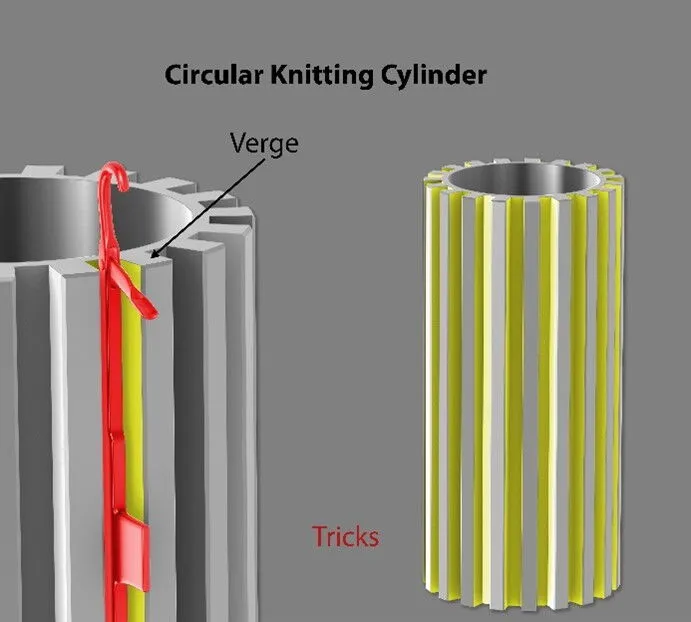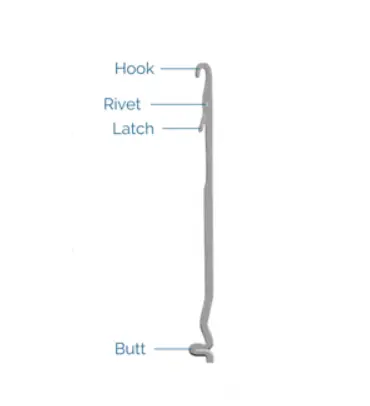Circular Knitting Machines: A Deep Dive into Functionality and Design
Mar 21, 2025
Circular knitting machines are a cornerstone of the textile industry, widely used for producing single-knit fabrics. These machines are known for their efficiency, versatility, and ability to create seamless tubular fabrics, making them indispensable for manufacturing garments, hosiery, and technical textiles. A key feature of circular knitting machines is their yarn supply system, which is typically fed from creels located either above or beside the machine. The positioning of these creels, along with the intricate mechanics of the knitting process, plays a crucial role in determining the machine's performance, fabric quality, and ease of maintenance. This article explores the design, operation, and key components of circular knitting machines, providing a comprehensive understanding of their functionality and applications.
The yarn supply system is a critical component of circular knitting machines. Yarn is fed into the machine from creels, which can be positioned either above the machine or at its side. Each configuration has its advantages and considerations:
Side-mounted creels are increasingly popular due to their practical benefits. Positioning the creels at the side of the machine makes it easier for technicians to access and service the yarn supply system. This setup also reduces the amount of lint that falls into the knitting elements, minimizing the risk of defects in the fabric. Additionally, side-mounted creels allow for the use of larger yarn packages, which reduces the frequency of yarn changes and increases production efficiency. This configuration also enables the machine to accommodate more feeds, enhancing its versatility and output capacity.
While less common, top-mounted creels are still used in certain applications. In this setup, the yarn is fed from above the machine, which can be advantageous in facilities with limited floor space. However, top-mounted creels may pose challenges in terms of accessibility for maintenance and may result in more lint accumulation in the knitting elements.
Regardless of the creel positioning, the fundamental principles of circular knitting remain the same. The yarn is fed into the machine, where it is transformed into fabric through a series of precisely coordinated movements.
At the core of every circular knitting machine is the knitting cylinder, a meticulously engineered component that determines the machine's gauge and fabric characteristics. The cylinder is a metal drum with grooves or slots cut into its outer surface. These grooves, also referred to as tricks, house the knitting needles, which move up and down to form stitches.
The gauge of a circular knitting machine is defined by the number of needles per linear inch of the cylinder. For example, a machine with 18 needles per inch is classified as an 18-gauge machine. The gauge directly influences the fineness and density of the fabric produced. Higher-gauge machines produce finer fabrics with tighter stitches, while lower-gauge machines are used for coarser fabrics.
The cylinder is manufactured with extreme precision to ensure uniformity in diameter and needle alignment. Any variation in the cylinder's dimensions can lead to inconsistencies in the fabric, such as uneven stitches or defects. The top edge of each groove, known as the verge, plays a crucial role in guiding the needles and ensuring smooth operation.

The knitting process in circular machines relies on the precise movement of latched needles, which interact with the yarn to form stitches. Each needle undergoes a series of stages to create a single stitch:

In the rest or running position, the needle holds a previously formed knit loop above or on the latch. This loop remains in place as the needle prepares to form a new stitch.
As the needle moves upward, the old loop slides down the needle shaft and clears the latch. This step ensures that the old loop is positioned below the latch, making way for the new yarn.
Once the old loop has cleared the latch, the needle begins to move downward. During this movement, the needle catches the new yarn, which is fed into the machine from the creel.
As the needle continues to move downward, the old loop knocks over the latch, releasing it from the needle. This action, known as cast-off or knockover, completes the formation of the new stitch.
The needle moves further down to fully form the new stitch, securing the yarn in place. The length of the yarn used to form the stitch, known as the stitch length, is a critical factor in determining the fabric's weight, width, and appearance.
The stitch length, or the amount of yarn used to form each stitch, is a key parameter in circular knitting. It directly affects the fabric's properties, including:
Longer stitch lengths result in lighter fabrics, while shorter stitch lengths produce heavier fabrics. Manufacturers can adjust the stitch length to achieve the desired weight for specific applications.
Stitch length also influences the width of the fabric. Longer stitches create wider fabrics, while shorter stitches result in narrower fabrics.
The stitch length impacts the texture and appearance of the fabric. Longer stitches produce a looser, more open texture, while shorter stitches create a denser, smoother surface.
By carefully controlling the stitch length, manufacturers can tailor the fabric to meet specific requirements, ensuring optimal performance and aesthetics.
Circular knitting machines are used in a wide range of applications, including:
These machines are commonly used to produce fabrics for T-shirts, underwear, socks, and other garments. The ability to create seamless tubular fabrics makes them ideal for manufacturing comfortable, form-fitting clothing.
Circular knitting machines are widely used in the production of hosiery, such as stockings and tights. The machines' precision and versatility enable the creation of intricate patterns and designs.
In addition to apparel, circular knitting machines are used to produce technical textiles for industrial applications. These include fabrics for medical devices, automotive interiors, and geotextiles.
Circular knitting machines are also used to manufacture home textiles, such as bedding, curtains, and upholstery fabrics. The machines' ability to produce large quantities of fabric quickly and efficiently makes them well-suited for these applications.
Circular knitting machines are capable of producing large quantities of fabric in a short amount of time, making them highly efficient for mass production.
These machines can produce a wide range of fabrics, from lightweight single knits to heavy-duty technical textiles. Their ability to accommodate different yarn types and stitch patterns adds to their versatility.
One of the key advantages of circular knitting machines is their ability to produce seamless tubular fabrics. This eliminates the need for sewing seams, reducing production time and enhancing the comfort and durability of the final product.
Modern circular knitting machines are designed for ease of maintenance, with accessible components and user-friendly controls. This minimizes downtime and ensures consistent performance.
Circular knitting machines are a vital component of the textile industry, offering unparalleled efficiency, versatility, and quality in fabric production. From their yarn supply systems and precision-engineered cylinders to the intricate mechanics of latched needles, these machines are designed to deliver consistent, high-quality results. By understanding the principles and components of circular knitting, manufacturers can optimize their operations, produce fabrics tailored to specific applications, and meet the growing demands of the global textile market. As technology continues to advance, circular knitting machines will remain at the forefront of innovation, driving the future of textile manufacturing.
Next: Understanding The Single Jersey Open Width Circular Knitting Machine
Previous: Sinker Loop Pile Jacquard Circular Knitting Machine Transforms Uganda's Textile Industry
We have been committed to manufacturing all types of circular knitting machines with great quality and reasonable price for a long time. Our professional team is highly specialized and problem-solving oriented. We put the most effort into meeting your knitting demands, achieving a win-win situation.